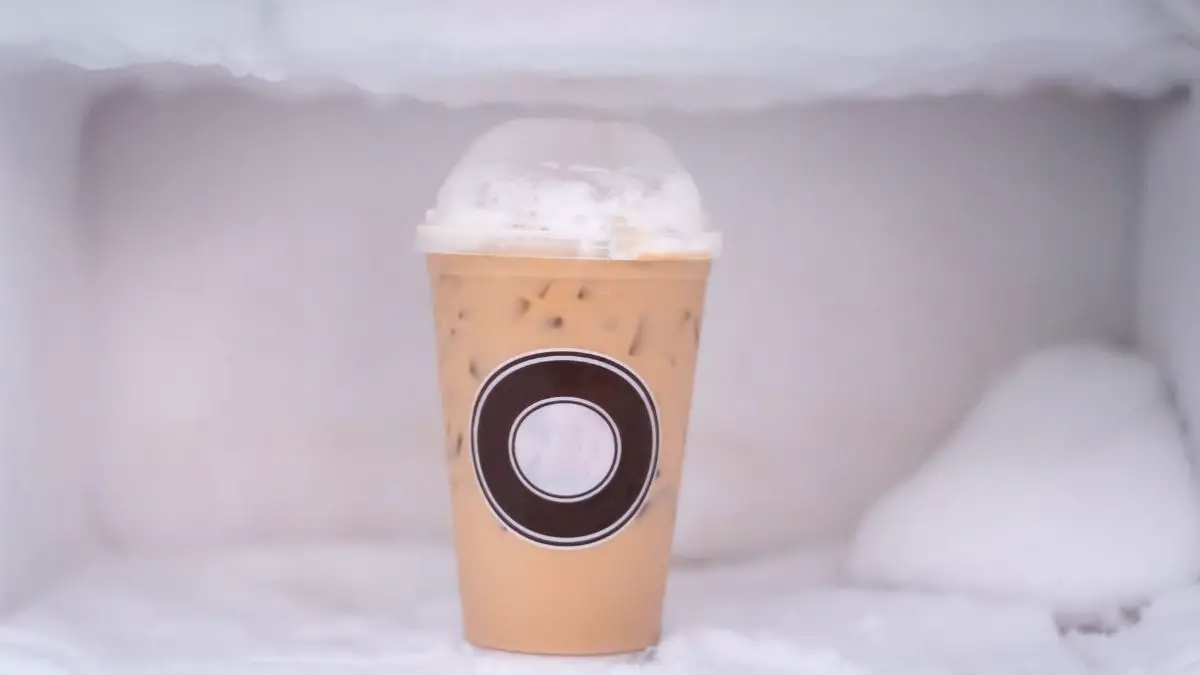Whether you want a cold coffee without ice, or you’re in a hurry so you don’t have time to drink your hot coffee, it is a major question among coffee people if you can put hot coffee directly inside the fridge.
Well, it is definitely safe to put your hot coffee inside the fridge. However, there are a few things that you must remember before doing it, like having a suitable container and proper distancing to other things inside the fridge.
In this article, we will learn more about the rest of the 5 things you should know before putting your hot coffee inside your fridge.
Why Do People Put Hot Coffee In The Fridge?
There are countless reasons why someone would be putting their coffee in the fridge. Here are some of them:
- Some people don’t like ice in their cold coffee. So, what they would do is to brew it hot and then put the coffee inside the fridge. In this way, they can enjoy their coffee without the need for ice.
- You are in a hurry and you can’t bring a cup of hot coffee with you. So, what most people would do is to just leave the coffee inside the fridge to keep its freshness when they drink it later.
- You have brewed too much coffee and you don’t want to waste it, so you just thought of putting it inside the fridge.
5 Things You Should Know
We’ve already told you that you can put your hot coffee inside the fridge. But we know that your question doesn’t end here as you want to know more things about it. Will it increase the cooling speed? Will your fridge stop working? Can it cause damage to your container? And more.
So, we will be sharing 5 things that you should remember as you put your hot coffee inside the fridge to avoid the said scenarios. Following these instructions will not only guarantee you safety but will also give you a good coffee drinking experience.
1. Place Your Coffee In A Suitable Container Before Refrigerating It
Placing your coffee in a container that can easily transfer heat is a very important note to consider. This will allow the heat from the coffee to effectively and easily be released. Choosing an inert container is also essential so flavors and odor will not be transferred to your coffee.
You might also want to place it in a container that has a tight lid since coffee is very reactive with odors and flavor components. In this case, putting it in a container made with steel and has a tight lid is a very good option.
Avoid using containers that can insulate the coffee, such as travel mugs and thermal containers. Moreover, avoid using ceramic cups again due to their insulating tendencies.
2. Provide A Good Distance Between Your Coffee And Other Items
Provide enough distance between your coffee and other items because heat is easily transferred inside. Dairy products, such as cheese and butter, can be easily spoiled by heat so make sure to keep them away from your coffee.
3. Place Your Coffee At The Back Of The Fridge
Why? Placing it at the back of the fridge can enhance and speed up the cooling process. After it cooled enough, you can already transfer it to the front part or at the bottle rack of your fridge.
4. You Can Pre-Cool Your Coffee Before Putting It In The Fridge
If you know your fridge is sensitive to heat or you’re just in a hurry, you can pre-cool your coffee first before putting it in the fridge. You can achieve the precooling process using the following ways:
- Use a larger container. Placing your coffee in a larger container can speed up its cooling process before putting it in the fridge. This allows the molecules to be farther away from each other to speed up the cooling.
- Use a frozen container. This can be achieved by chilling a container, preferably an enamel mug, then pouring the hot coffee to it. Enamel mugs can absorb heat shocks better and are the best option in this process.
- Place ice cubes in a bowl. After putting your coffee in a metallic container, you can place it above a bowl with ice cubes to speed up the cooling process. Just make sure that you don’t use ceramics or carafes because they tend to easily break because of the heat shock.
- Use stainless steel spoons. What you can do is to put two to three stainless steel spoons in your coffee. They are good convectors and can easily transfer the heat of the coffee to the air.
- Pour the coffee in two containers. This is a traditional method wherein you pour the coffee from one container to another, then pour it back on the first container. Repeat the process until the coffee is at your preferred temperature.
5. Use Smaller Portions
The USDA recommends that when putting hot food or drinks in your fridge, you divide them into smaller portions. Placing large amounts of food or drinks can rapidly increase the temperature of your fridge which may cause spoilage of other items. Thus, if you’re putting in a large amount of hot coffee, you must divide it into 2-3 containers.
Will The Glass Break When You Put It Inside The Fridge?
Generally, the answer is no. Coffee cups and glasses are normally manufactured in a way that they can resist sudden changes to temperature. So, they wouldn’t normally break if they don’t have prior damages.
The refrigerator will also cool the coffee down slowly so there would only be minimal temperature shock that the cup will undergo. However, placing your coffee cup or glass frequently inside the fridge can damage it. This can cause your cup or glass to eventually give up and break.
So, it is really important to choose a suitable and proper container that is made to resist heat better like enamel mugs.
Can I Microwave My Coffee After Putting It In The Fridge?
This is a very big no-no. You should never ever put your coffee in the microwave for the purpose of reheating it. Aside from the mere possibility of burning your hand and scalding your tongue, there are numerous reasons why you should not microwave your cup of coffee.
Here are some of them:
- Your coffee will lose its aroma and taste burnt.
- Reheating your coffee in a microwave will never revive the freshness of your coffee. It has significantly lost its freshness when it cooled down in the first place.
- It will just extremely heat up your cup and will not gauge the lost temperature of your coffee. Again, you’ll just be burning your hand and tongue.
How Long Does Hot Brewed Coffee Last In The Fridge?
Generally, when sealed in a tight lid container, brewed coffee can last 3-4 days inside the fridge. However, don’t expect your coffee to taste exactly the same and may even taste not that good. Adding milk or cream can also shorten the lifespan of your coffee.
As a general rule, hot brewed coffee is most fresh for 20 to 30 minutes at room temperature. It could last for 4 hours with no milk or creamer. When it has milk or creamer, it can only last for an hour.
In terms of cold brew coffee, it’s more likely to last longer than hot brewed coffee. Without milk or creamer, the cold brew coffee can stay up to 7-10 days in the refrigerator. When you add water or place a coffee that you bought from a coffee shop, it can last up to 3-4 days. However, if you add milk or creamer to your coffee, it can only last for 1-2 days inside the fridge.
Are There Any Risks In Consuming Improperly Stored Coffee?
Coffee can normally be consumed past its shelf life. With this, it is generally not risky or dangerous when you accidentally drink improperly stored coffee in the fridge. Also, remember that coffee past its shelf life will not taste the same.
However, it is still better to check first the coffee you’re drinking, especially when it is stored in the fridge. Also, coffee that has milk has a shorter life span even stored in the fridge. So, be extra careful when dealing with coffee with milk or creamer.
It Is Safe To Put Hot Coffee In The Fridge
You can put hot coffee in the fridge safely as long as you follow the tips we’ve given you above. Choose a tight lid container, provide proper distance to avoid spoilage of other food items, place the coffee at the back of the fridge for faster cooling, pre-cool the coffee, and use multiple containers to also avoid spoilage.
Hot brewed coffee can stay in your fridge for 3-4 days inside the fridge. However, if you add milk and cream to your cup, the lifespan of your coffee will be shorter.
Now, whenever you feel like having a cold coffee without ice or you’re in a hurry, you now know what to do.

